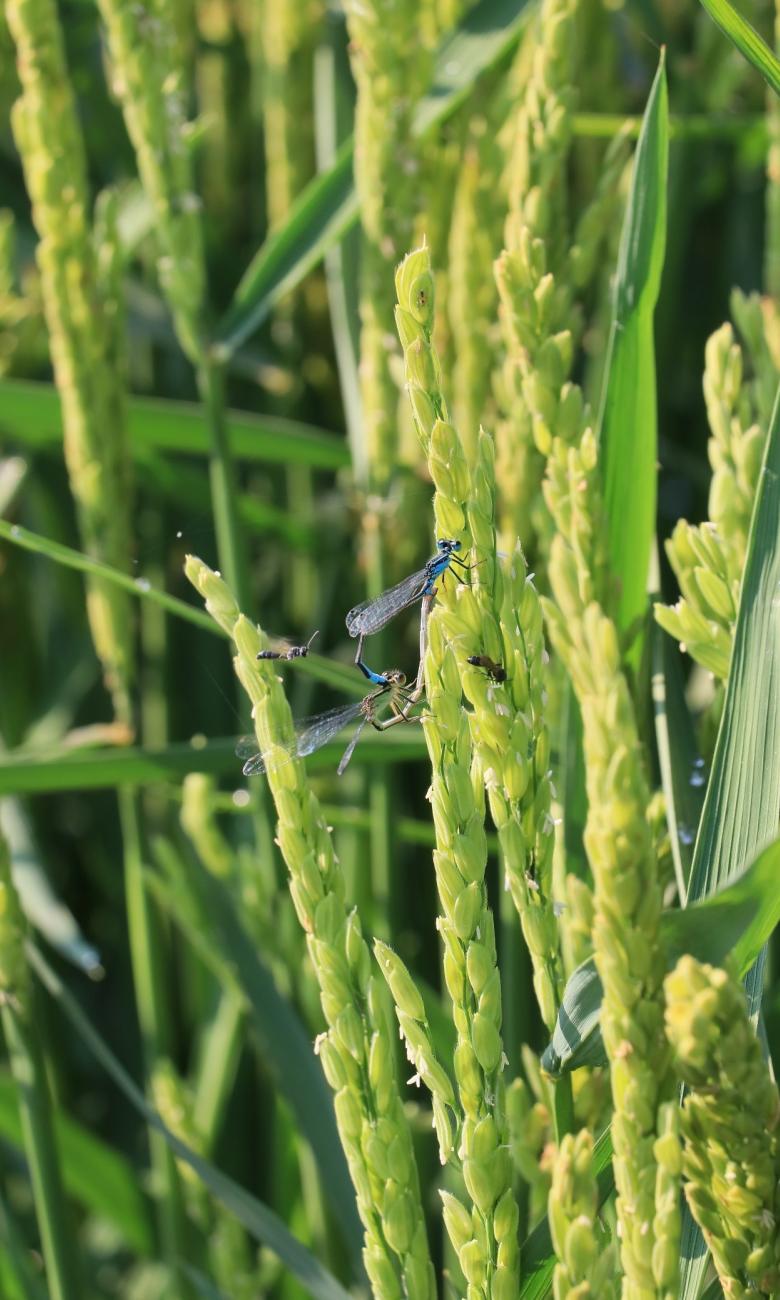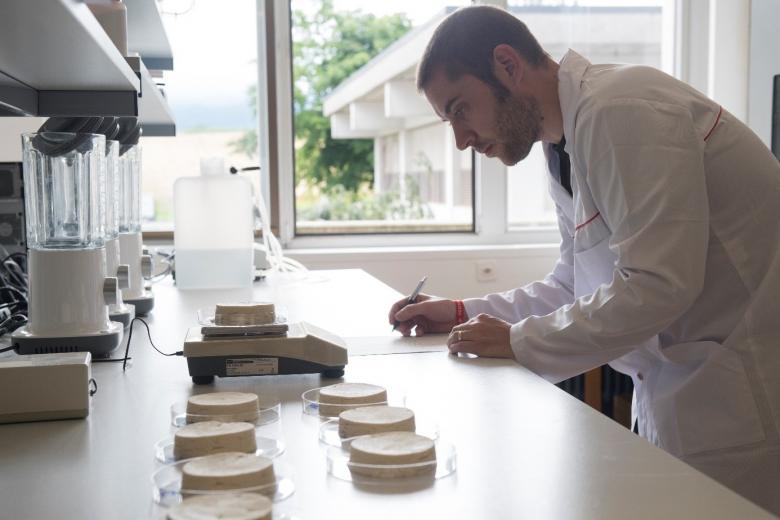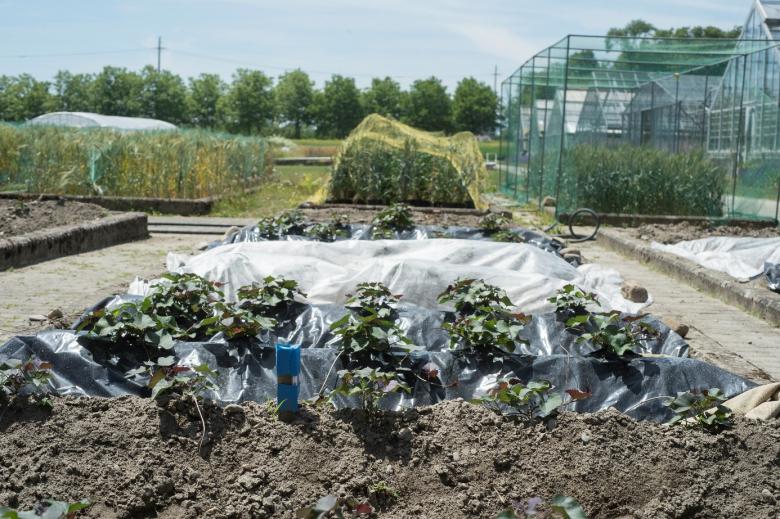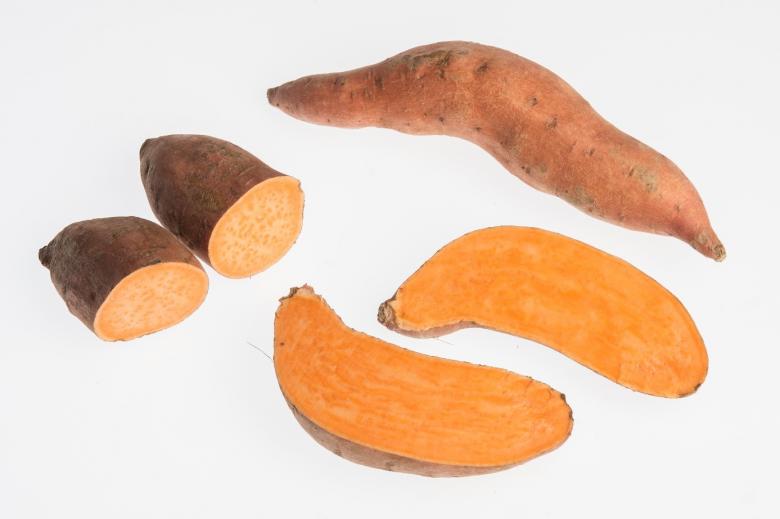Innovative Swiss agriculture: rice, tofu and sweet potatoes
Will rice, soya beans and sweet potatoes – which originated in Asia and the Americas – become normal Swiss crops in the future? Valued for their adaptability to climate change and nutritional qualities and also as a potential source of diversification, these crops have in fact begun to be grown in parts of Switzerland and could be much more widely cultivated in the future.
New dietary habits, climate change and production constraints are just some of the challenges Swiss agriculture will face in the future. This is why Agroscope, the Swiss federal centre of excellence for agricultural research, is examining whether there is a potential for growing crops like rice, soya beans and sweet potatoes here in Switzerland.

Are we about to see rice paddies in northern Switzerland?
Rice cultivation, which is generally associated with Asian countries like China and India, could well become a reality in northern Switzerland. This cereal is already being produced in Ticino in order to meet strong consumer demand for Swiss-grown risotto rice. Agroscope has been conducting cultivation trials in northern Switzerland since 2017. An Agroscope research team conducted a first trial at the Witi nature reserve on the outskirts of Grenchen in the canton of Solothurn. A second trial was conducted in Schwadernau in the canton of Bern in collaboration with Hans-Rudolf Mühlheim, who owns a farm there. In contrast to the dry cultivation method (without artificial flooding of fields) used in Ticino, the trials conducted at the Witi nature reserve and in Schwadernau involved wet rice cultivation. First, the land was tilled and divided into two halves. On one half, rice seeds were sown and the land was artificially flooded. On the other half, rice seedlings were planted.

© Kathrin Hartmann
"The harvests that followed the 2017 and 2018 trials were very encouraging," says project manager Thomas Walter. "The trial crops yielded between four and seven tonnes of raw rice per hectare – a very promising market potential," he adds. Thomas Walter notes, however, that adapting wet rice cultivation to the Swiss climate and reducing its ecological footprint will require further research. In addition to being a high value-added production method that does not require any chemical pesticides, wet rice cultivation also contributes to biodiversity. During the trial at the Witi nature reserve, the project team observed a number of threatened animal species, including green tree frogs, natterjack toads and snipes, a species of wading bird typically found in marshes. Seventeen dragonfly species and two rare plant species were also observed in the rice field.
Tofu, an alternative source of protein
Some 340 million tonnes of soya bean are produced worldwide each year, making it the world's leading oilseed and protein crop. This legume is used for animal feed in the form of soya bean meal and for human consumption in products such as soya oil, soya milk and tofu. The United States, Brazil and Argentina are the world's main soya-producing countries. Soya is also cultivated in Switzerland, but Swiss production covers less than 1% of domestic demand. "The first step in our research – which began in 1981 – was to develop soya bean varieties adapted to the Swiss climate," explains Claude-Alain Bétrix, a researcher at Agroscope. About 50 varieties were selected for distribution to farmers in Switzerland and other European countries.

©Agroscope, Carole Parodi
Claude-Alain Bétrix and his team carry out tofu research at an Agroscope crop quality lab: "Our lab is like a small kitchen where we make tofu according to the traditional recipe, but every step is precisely calibrated with analytical instruments." The soya beans are soaked overnight in water and ground into a paste that is then heated and filtered. The resulting liquid is mixed with a coagulating agent to obtain curd that is drained and pressed into tofu. The research team then compares the characteristics of tofu made from different soya bean varieties. It then analyses the colour and texture of each tofu sample, as well as their protein content and quality. Whereas most soya bean varieties have an average protein content of 40%, the Proteix, Falbala and Protibus varieties created by Agroscope have protein levels ranging from 45% to 50%. In order to meet tofu lovers' expectations, the Agroscope team has developed better, less grassy-tasting varieties. Agroscope's 'Aveline' and 'Amandine' tofus, for example, have a light hazelnut flavour that is sure to entice seasoned gourmets.

© Agroscope, Carole Parodi
Sweet potatoes, from the tropics to the shores of Lake Geneva
"The idea of conducting a trial to see if sweet potatoes could be grown in Switzerland came to me during a trip to western France, where small-scale vegetable farms grow sweet potatoes as a field crop. It had never occurred to me that it would be possible to grow this tuber in our latitudes," explains Brice Dupuis, a researcher at Agroscope. Despite its name, the sweet potato is not related to the potato but belongs to another family of plants, which goes by the lovely name of morning glory (Lat. Convolvulaceae). This root vegetable is mainly grown in tropical countries in Africa, the Americas, Asia and Oceania. As its name suggests, the sweet potato is a slightly sweet vegetable. It can be served as chips or mashed, and its leaves can be prepared like spinach. Sweet potatoes also have many nutritional benefits that make them popular among Swiss consumers.

© Agroscope, Carole Parodi
Trials conducted by Brice Dupuis on the shores of Lake Geneva have shown that sweet potatoes can be grown in Switzerland thanks to the use of clever cultivation techniques. "We tested a variety of methods to protect the plants from the cold: we applied wheat mulch to the soil surface, covered the soil under the sweet potato plants with micro-perforated black plastic sheeting and laid a protective film on the plants," explains Dupuis. These cultivation techniques yielded promising results, with sweet potatoes weighing up to 2 kilogrammes. Sweet potatoes thus offer vegetable farmers an opportunity to diversify their production. They are also well-suited for organic farming, because most of the diseases and pests that can blight sweet potato crops do not occur in Switzerland. But a number of challenges remain – especially weed control and how to store sweet potatoes for several months without loss of quality – which will keep agricultural researchers busy for years to come.

© Agroscope, Carole Parodi
© Agroscope




